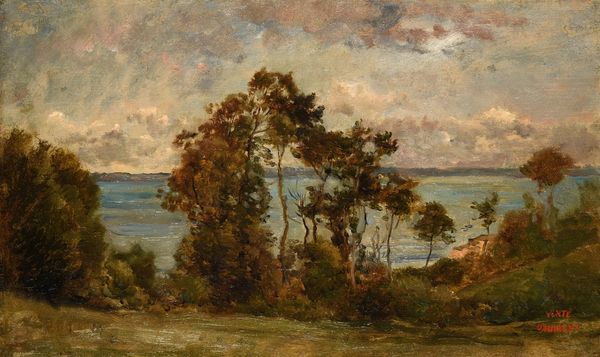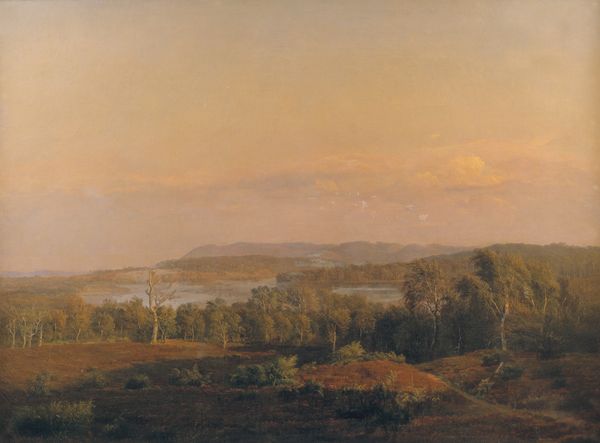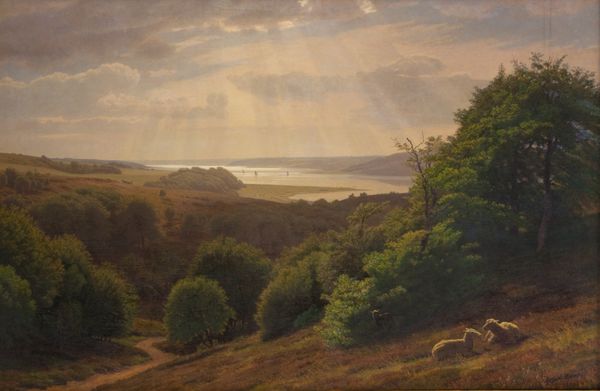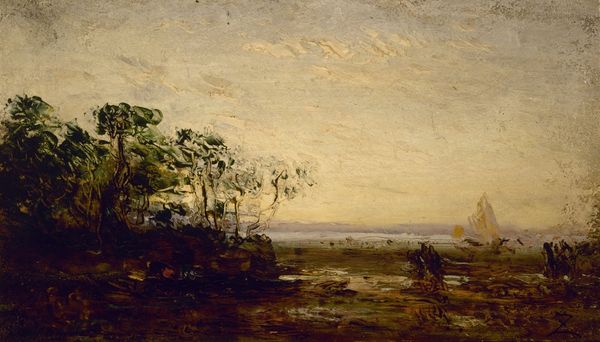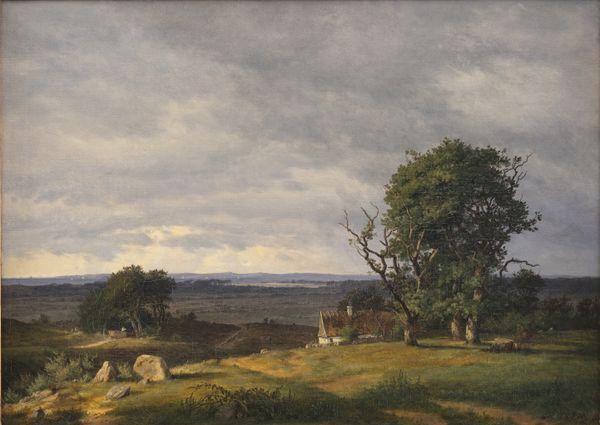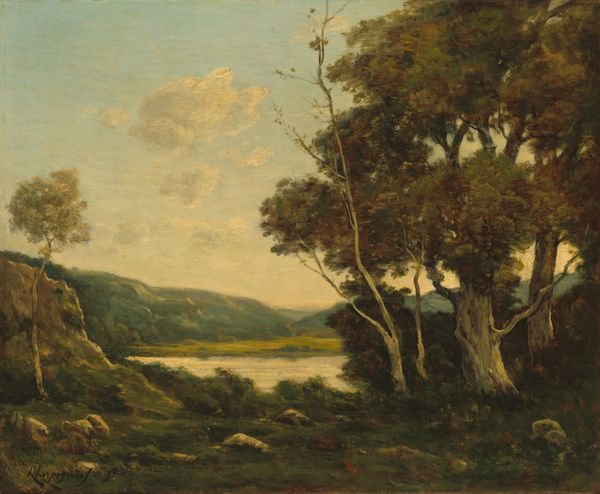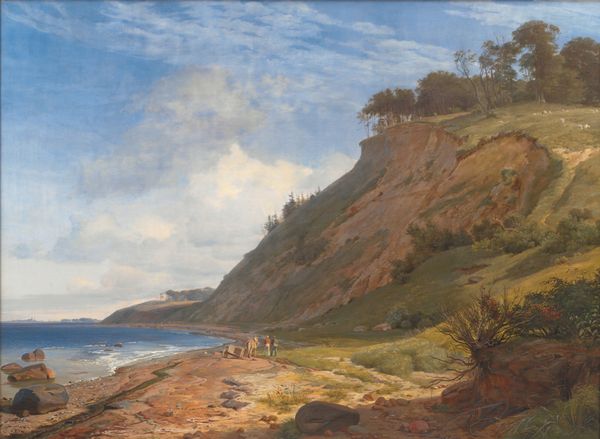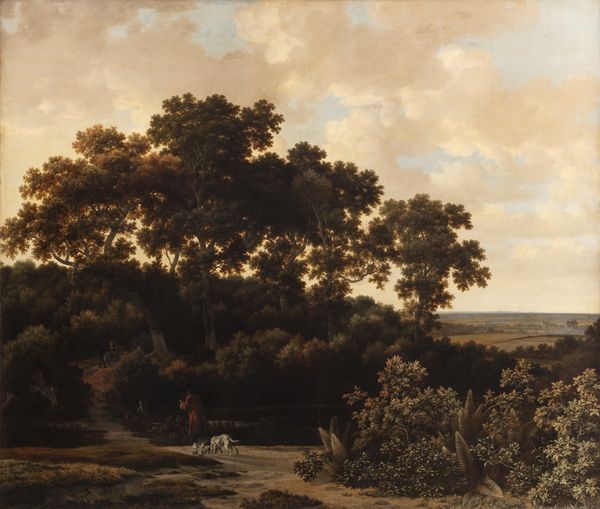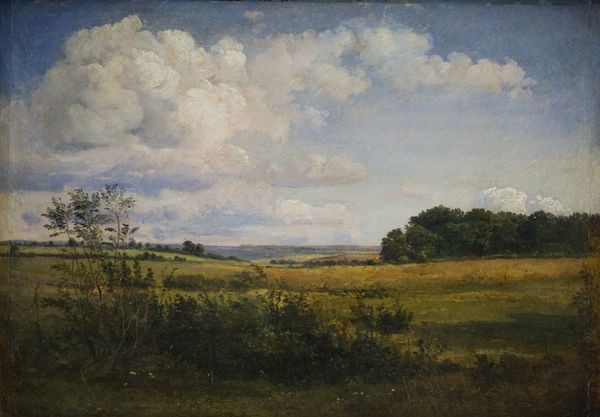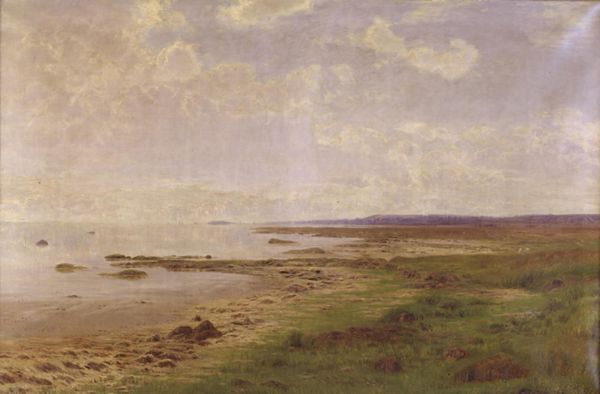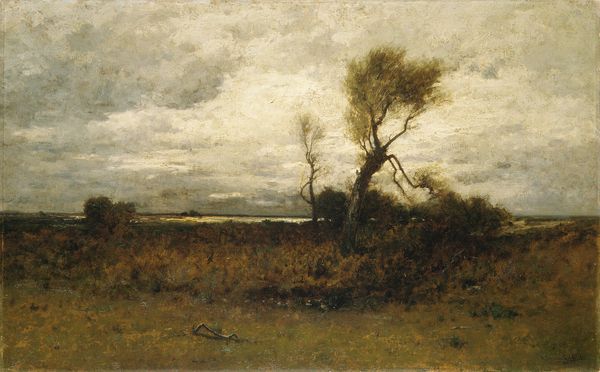
painting, plein-air, oil-paint, paper
#
painting
#
plein-air
#
oil-paint
#
landscape
#
paper
#
nature
#
oil painting
#
romanticism
Dimensions: 24 cm (height) x 33 cm (width) (Netto), 33.2 cm (height) x 41.4 cm (width) x 5.6 cm (depth) (Brutto)
Johan Thomas Lundbye painted “Kolås Wood, Vejrhøj” with oil on canvas. Lundbye, who was deeply rooted in the Danish Golden Age, found himself amidst rising national romanticism. Here, he directs our gaze across the Sejerø Bay from Kolås Wood. Lundbye masterfully balances the detailed foreground with the expansive vista. The emotional tenor of the painting lies in its sublime, panoramic view which echoes the nationalistic sentiments of the time, during which artists sought to capture the essence of the Danish landscape as a reflection of national identity. The scene is more than just a landscape. It is a stage where the interplay of nature mirrors a broader cultural narrative about belonging, identity, and the profound connection between a people and their land. The painting invites us to contemplate our own place within these ever-evolving landscapes of identity.
Comments
statensmuseumforkunst almost 2 years ago
⋮
"I do not find lonely places in nature sad, but am drawn to the grandeur and calm of such sites", said J.Th. Lundbye in his diary in 1844. Lundbye was a votary of isolation as something conducive to the study’s union of the love of nature and the artistic spirit. The artist's autobiographical landscape In this case the signature tells us that the study was created on Vejrhøj, a landmark within the artist’s autobiographical landscape: His grandparents lived in the nearby town of Kalundborg, where he himself was born, and the place became a recurring motif in his pictures. The close relationship between art and artist The study testifies to the close relationship between art and artist, for the painter very emphatically left evidence of his work in the picture, e.g. in the luminous tree trunks that have been outlined with traces of thick, glossy paint. Inspired by Søren Kierkegaard In Lundbye’s work, withdrawal into a state that emphasised the individual and self-elected loneliness was partly prompted by the philosopher Søren Kierkegaard (1813-1855), whose writings had begun to have considerable impact on his mindset around the time this study was created. Kierkegaard evinced a similar interested in a radically individual state of perception, and as far back as 1843 Lundbye became familiar with Kierkegaard’s Either/Or, which was published under the pseudonym Victor Eremita (the Victorious Hermit).
Join the conversation
Join millions of artists and users on Artera today and experience the ultimate creative platform.
